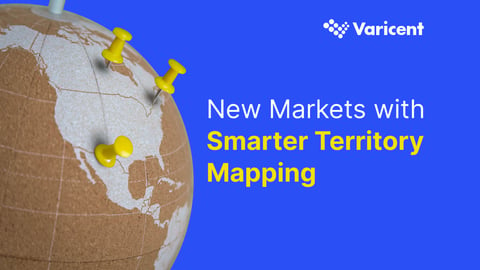Territory mapping software benefits sales operations and planners because it integrates sales and geolocation data and uses visualization to make it easier to design sales territories. It can help you re-design territories as part of an overall territory design and planning process.
There are many territory mapping applications out there, some even claiming to be the “best free territory mapping software.” It can be easy to choose the wrong one, especially if you are looking for online territory mapping software to help you with the territory design and allocation that occurs during your regular sales planning cycle. In this blog, we share costly mistakes you can avoid when you are choosing sales territory mapping software.
Interested in how your peers are using sales territory mapping software for sales planning? Read the free research report.
Believing the Claims of Free Territory Mapping Software
The best things in territory mapping are not free. A web search of “free territory mapping software” can reveal a promising-looking list, along with meta descriptions that mention the software is free. However, visit any of the websites of these solutions, and you soon learn that “free” means a free trial. Or the software might have been free at one time but not anymore. When someone on Quora asked “Where can I find a sales territory map template that's free, easy to use, and easy to share?” the responses did not include anything that was free. Instead, they mentioned that they preferred solutions they paid for.
Before you decide that maybe a free trial or a freemium version might still work for you, go to the pricing pages. What you might end up paying can be a surprise, especially since the software is not likely to help you with designing territories during your sales planning cycle and you’re back to square one. If you do find one that’s in your budget, it is not likely to show you what territories you might not be covering.
Considering Spreadsheet Add-on or an Online Planning App Plug-in as Territory Mapping Solutions
Rows of spreadsheets or tables of data in planning or customer relationship management (CRM) software can be overwhelming when you’re trying to design or plan territories. So, you might think that what you need is something that can take spreadsheet data and turn it into maps. Or, if you’ve got planning or CRM software, you might be lured into using a plug-in that promises quick transformation of data into territory maps.
One problem with the idea of magically rendering interactive maps from a spreadsheet or simply firing up a plug-in to solve your territory planning is that it is never as easy as you’re promised it will be. In the case of the spreadsheet add-on, you will find that it is difficult for it to render exactly how you want. The planning or CRM software plug-in ends up being limited in scope. In some cases, you need to engage with someone to get it to work for you—and flexibility is not an option unless you are ready to add to your spending by engaging with a third party to alter your data model.
Investing Territory Mapping Software Built Just for Planning & Optimization
In the territory mapping software universe, there are online and cloud applications that appear to be the perfect solution for addressing the complexity of territory mapping, design, and planning. What’s not to love about a solution that isn’t an add-on, doesn’t require help implementing, and won’t expire on you and demand a costly upgrade? It seems like the ideal choice for anyone tasked with designing territories during the planning cycle. The problem is that it’s all you get.
As most sales operations managers and sales leaders know, territory mapping is just a subset of the sales planning process. After you have designed your territories, you must assign quotas to those territories. The territory and quota planning process has inspired reports and guides that are 30 pages or more. The reason for that is that mapping territories and optimizing those maps can be difficult enough, but when you add quota allocation to the mix, the situation gets even more complicated. For example, there are top-down and bottom-up plans you must reconcile.
So, if you’ve invested in just that one aspect of sales planning, you have resolved only a portion of the complexity. You then need to acquire a solution for quota planning or try to integrate the territory mapping software into a system you already have. And up go your costs again.
Move on from Territory Mapping Software to Smarter Territory Quota Planning
With all the different ways territories are defined these days—by geography, industry, major accounts, product lines, any combination of these, or all of them—you need more than a free trial, add-on or plug-in, or a one-trick territory mapping pony. You need smarter territory and quota planning. It enables you to plan for growth by maximizing your territory and quota coverage model. It should be a single, purpose-built territory and quota planning application.
This application should give you much more than sales territory mapping software can. It should provide you with the flexibility to respond to changing business needs by offering the ability to plan by geography, by industry, by named accounts, by product or any combination. It should adapt quickly to new organizational demands, remove bias by using internal metrics like prior-year and trailing 12-month revenues and offer guided intelligence to accelerate the process and eliminate surprises.
Varicent Territory and Quota Planning offers all of this and more.




